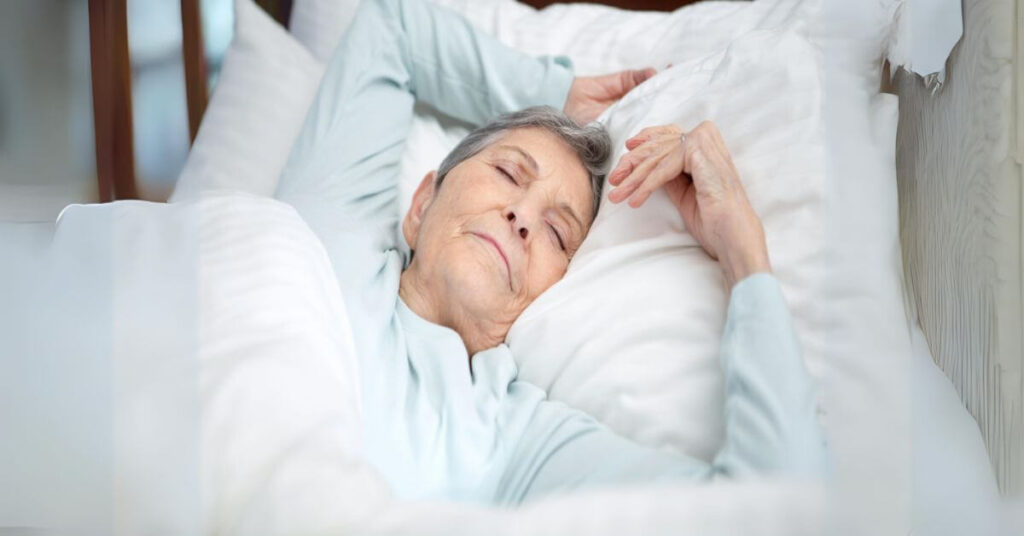
Have you been noticing the lines and wrinkles on your faces upon waking up in the morning? Yes, I did too. Don’t panic, that is what we call sleep wrinkles.
Trust me, at this age and time where I have no time to take care of my health and appearance, by all means, I do overthink and worry about the wrinkles on my body.
The only thing that I try to maintain is my sleep schedule, which is why I always remind my kids about how important sleep is. How we sleep very much affects our daily lives and appearance.
But sometimes, it is hard to sleep properly due to many reasons. Mommies, if you’re one of those people who are struggling in this department, don’t worry! I got your back.
Let me help you get back your radiant and fresh-looking faces with these helpful tips to prevent sleep wrinkles, and improve your sleep quality to diminish fine lines and hide wrinkles.
Continue reading to learn ways to get over those wrinkles.
What are Sleep Wrinkles?
Sleep wrinkles are lines that develop on the face due to the way the skin is pushed against the pillow during sleep. Unlike expression wrinkles, which are formed from facial muscle movements such as smiling or frowning, sleep wrinkles are formed from mechanical compression, shear, and stress forces acting on the skin.
These forces can distort the skin and lead to the formation of wrinkles over time. This is why the position in which you sleep plays a significant role in the emergence of sleep wrinkles.
Why do we get Sleep Wrinkles?
Besides sleeping in the worst position possible, there are many reasons why one gets sleep wrinkles. Here are the factors:
- Pillowcase Material
The material of your pillowcase also plays a part in the development of sleep wrinkles. Rough or friction-prone materials like cotton can cause increased friction between your face and the pillow, leading to more wrinkles. Consider using a satin or silk pillowcase, which reduces friction and is gentler on your skin.
- Skin Losing Elasticity
As we age, our skin naturally loses some of its elasticity and collagen production. This reduction in skin resilience makes it more susceptible to the formation of wrinkles. The pressure and stretching of the skin during sleep can be more pronounced if your skin has lost some of its natural elasticity.
- Chronic Dehydration
Dehydrated skin is less plump and elastic, which can make it more susceptible to creasing. If you go to bed with dehydrated skin, the chances of sleep wrinkles forming increase. This also applies to other parts of the skin such as the neck, moisturizing the neck will get rid of neck wrinkles.
- Short Sleep Duration
The amount of time you spend sleeping can also affect the appearance of sleep wrinkles. When you don’t get enough sleep, your skin may not have the opportunity to repair itself properly, which can exacerbate the formation of wrinkles.
- Smoking and Sun Exposure
Lifestyle choices can also contribute to the development of sleep wrinkles. Smoking and excessive sun exposure can accelerate the breakdown of collagen and elastin in the skin, making it more prone to wrinkling. Avoiding these habits can help preserve your skin’s youthful appearance.
Ways to Prevent Sleep Wrinkles
1. Sleep on your back
Sleeping on your back is often recommended as the best sleeping position to prevent sleep wrinkles. When you sleep on your back, your face remains free from direct contact with the pillow, reducing the pressure and friction that can cause wrinkles.

This position minimizes the repetitive facial movements and compression that contribute to sleep wrinkles, helping to maintain the natural elasticity and smoothness of your skin.
Additionally, sleeping on your back can have other benefits beyond wrinkle prevention. It can promote better spinal alignment and alleviate pressure on your neck and back, leading to improved overall sleep quality.
So, if you’re concerned about sleep wrinkles and want to wake up with smoother, more youthful skin, making the switch to back sleeping could be a simple yet effective solution.
2. Use nighttime skincare products
Retinols
We all know the benefits that retinol offers. Retinols are known to reduce fine lines and are the common serum used by a lot of mature skin people. It also helps with collagen production and encourages cell regeneration so that the skin can maintain that elasticity.
Night Creams
Moisturizing your skin before going to bed is always important, as it can replenish moisture lost during the day and help keep skin supple.
Opt for a night cream that contains hyaluronic acid, which helps to hydrate the skin and reduce the appearance of wrinkles.
Additionally, look out for creams with collagen-boosting ingredients like peptides or vitamin C to help prevent and reduce sleep wrinkles.
Face Masks
Using a face mask once or twice a week can also help prevent sleep wrinkles. Face masks with ingredients like hyaluronic acid, collagen, and vitamin C work to hydrate, plump, and repair the skin while you sleep.
3. Silicon pads
Silicon pads are an innovative tool in the fight against sleep wrinkles. When applied to the skin, these pads create a microclimate between the skin and the pad, promoting hydration and encouraging the skin’s natural ability to retain moisture.
This hydration helps to plump the skin, smoothing out existing wrinkles and preventing the formation of new ones.
Moreover, silicon pads serve as a physical barrier against the pressure and friction from your pillow, minimizing the mechanical stress that can lead to sleep wrinkles.
It is also said that applying silicon pads on the face helps your skin stay flat and prevents the skin from folding when you are moving in your sleep.
For best results, apply the silicon pad to clean, dry skin before going to bed, and leave it on overnight. In the morning, you’ll wake up with smoother, more youthful skin.
4. Do not sleep on your hands
Avoiding the habit of sleeping with your hand pressed against your face can play a significant role in preventing sleep wrinkles.
When you sleep with your hand under your cheek or chin, the pressure exerted on your skin can lead to the development of creases and lines.
Over time, this repetitive pressure can cause sleep wrinkles to form, particularly around the areas where your hand makes contact with your face. To prevent these wrinkles, it’s important to be mindful of keeping your hands away from your face while sleeping.
Moreover, sleeping with your hand under your face can also contribute to increased friction and, in some cases, the transfer of dirt and oils from your hand to your skin. This can clog pores and lead to skin issues like acne or irritation.
To maintain healthy and wrinkle-free skin, it’s advisable to break the habit of resting your hand on your face during sleep and opt for a more relaxed position, such as keeping your hands by your side, which allows your skin to remain undisturbed and smooth.
5. Change to a firmer pillow
The type of pillow you use and the material it’s made from can have a significant impact on your skin. Traditional pillows, especially those made from cotton or flannel, can cause friction against your skin as you move during sleep.
This friction leads to the formation of wrinkles over time. Furthermore, these materials can absorb the natural oils and moisture from your skin, leaving it dry and more prone to wrinkling.
Making the switch to an anti-wrinkle pillow can be a game-changer! These pillows are designed with your skin’s health in mind.
They are often made from materials like silk or satin, which are smoother and create less friction against your skin.
This means that as you toss and turn at night, your skin glides smoothly over the pillow, reducing the chance of wrinkle formation.
6. Have a fixed sleeping schedule
Maintaining a fixed sleeping schedule can significantly contribute to preventing sleep wrinkles. When you follow a consistent bedtime routine go to bed and wake up at the same time every day, your body becomes accustomed to a regular sleep pattern.
This regularity not only promotes a more restful and deep sleep but also allows your skin to undergo its natural nightly repair and rejuvenation process.
As a result, your skin remains healthier and more resilient, making it less prone to the formation of sleep wrinkles.
Furthermore, a consistent sleeping schedule can help prevent you from tossing and turning during the night, which can lead to friction and pressure on your skin, causing wrinkles.
By reducing the chances of adopting unfavorable sleeping positions and allowing your skin to rest undisturbed, a fixed sleeping schedule can be an effective strategy for maintaining a smoother, wrinkle-free complexion over time.
7. Sleep with an eye mask
The skin around your eyes is thinner and more susceptible to damage, making it especially prone to wrinkles.
By wearing an eye mask, you create a gentle barrier that shields your eyes and the surrounding skin from direct contact with the pillow.

This not only reduces the chances of sleep wrinkles but also helps to prevent puffiness and dark circles that can result from constant pressure on the sensitive under-eye area.
Moreover, an eye mask can provide a soothing, dark environment, promoting deeper and more restful sleep.
The combination of protecting your delicate eye area and ensuring a more restful sleep experience makes wearing an eye mask a valuable tool in your skincare routine, helping you wake up looking and feeling refreshed with fewer signs of aging on your skin.
Summary
While it may seem hard to believe, sleep wrinkles are a real and common issue that can affect anyone’s skin.
, by incorporating some simple habits and techniques into your nighttime routine, you can prevent the development of sleep wrinkles and maintain smoother, younger-looking skin over time.
From using specialized skincare products and tools to making small adjustments in your sleeping position and schedule, there are many ways to keep your skin in top shape while you sleep.
So, say goodbye to those pesky sleep wrinkles and hello to a more radiant complexion every morning!
People Also Ask
Can sleep wrinkles be completely avoided with the right sleeping position?
While choosing the right sleeping position, like sleeping on your back, can significantly reduce the risk of sleep wrinkles, complete avoidance may be challenging. Other factors, such as skin elasticity, dehydration, and facial movements during sleep, also play a role. However, adopting good sleep habits and skincare routines can help minimize their development.
Can using anti-wrinkle creams or serums eliminate sleep wrinkles?
Anti-wrinkle creams and serums can help reduce the appearance of wrinkles and improve skin texture, but they may not eliminate sleep wrinkles entirely. The best results come from a combination of factors, including proper sleep habits, hydration, a healthy lifestyle, and skincare products.
Are silk or satin pillowcases really effective in preventing sleep wrinkles?
Yes, silk or satin pillowcases can be effective in preventing sleep wrinkles. These materials reduce friction between your skin and the pillow, helping to prevent creases and fine lines.





